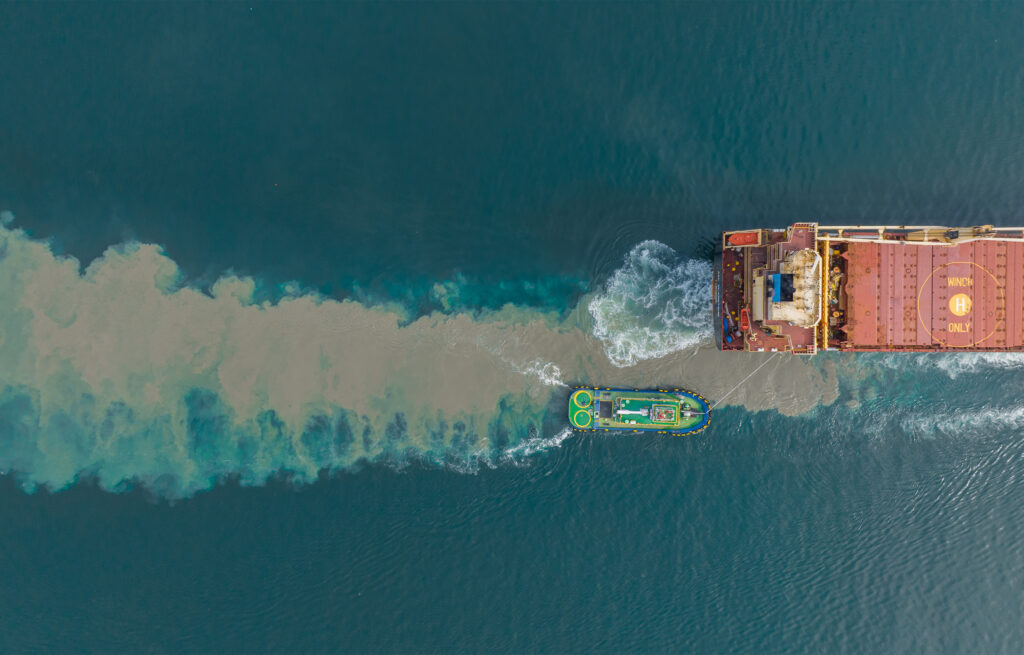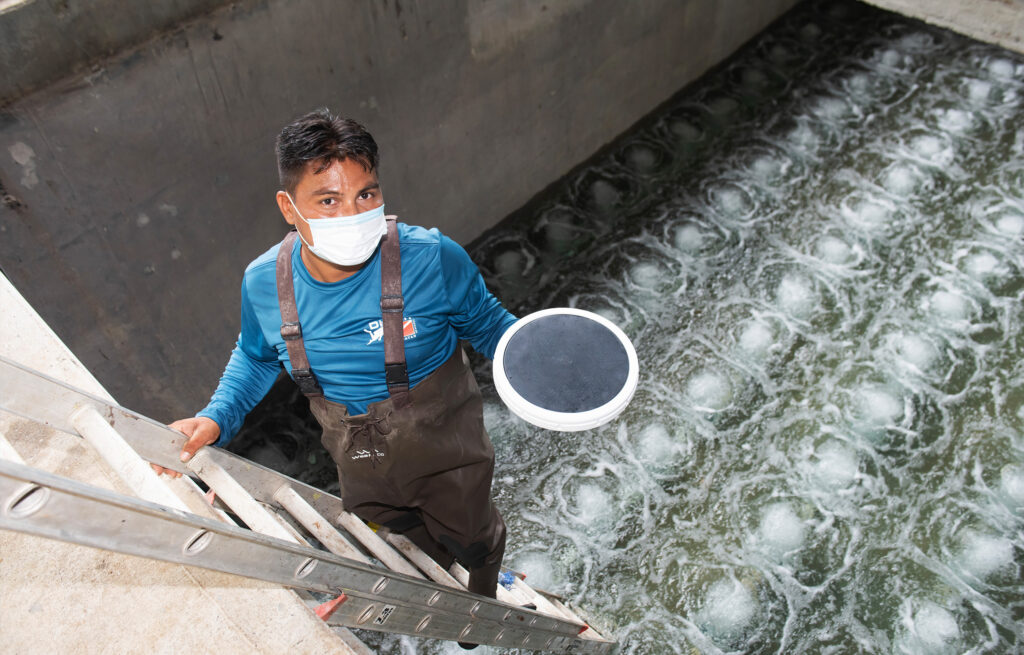Coral reefs are under threat from a variety of sources, one of the most significant being untreated wastewater. This toolkit aims to educate, inform, and empower individuals and communities to take action in protecting our precious coral reefs from the damaging effects of wastewater pollution.
An alarming 80% of global wastewater enters marine environments untreated, posing one of the biggest threats to coral reefs. We’ve already lost 14% of these vital ecosystems in just the last decade. The time to act is NOW.
Heather Starck, Executive Director – CORAL
Untreated Wastewater
Untreated wastewater refers to sewage, industrial effluents, and runoff that have not been processed to remove harmful contaminants before being released into the environment. This wastewater can contain a diverse mix of pollutants, including:
Nutrients: Excessive amounts of nitrogen and phosphorus, which are common in agricultural runoff and household cleaning products, can lead to nutrient pollution. This can trigger harmful algal blooms that suffocate marine life by depleting oxygen levels and blocking sunlight.
Pathogens: Bacteria, viruses, and other microorganisms present in untreated sewage can cause diseases in marine life and humans. These pathogens can be particularly dangerous in areas where people rely on seafood as a major part of their diet or where recreational water activities are popular.
Chemicals: Industrial effluents often contain toxic chemicals, heavy metals, and synthetic compounds that can be highly detrimental to marine ecosystems. These substances can accumulate in the tissues of marine organisms, leading to long-term health effects and disruptions in reproductive and growth processes.
Microplastics: Tiny plastic particles, often originating from cosmetic products, clothing fibers, and larger plastic debris that break down over time, can be ingested by marine organisms. Microplastics can cause physical harm and introduce toxic substances into the food chain.
Pharmaceuticals and Personal Care Products: Medicines, hormones, and various chemicals found in personal care products often end up in wastewater. These substances can interfere with the hormonal and reproductive systems of marine organisms, leading to population declines and disruptions in ecosystem dynamics.

How does untreated wastewater affect coral reefs?
When untreated wastewater enters marine environments, it can have devastating effects on coral reefs, which are already vulnerable to a range of other stressors such as climate change and overfishing. The introduction of pollutants from untreated wastewater exacerbates these threats and can lead to:
Coral Bleaching: Nutrient pollution from wastewater fuels algal blooms that block sunlight, essential for the symbiotic algae living in corals. Without sunlight, these algae cannot photosynthesize and produce energy for the corals, leading to bleaching and potentially death.
Disease Proliferation: Pathogens in untreated wastewater can infect corals, causing diseases that further weaken these already stressed organisms. Coral diseases can spread rapidly, decimating large areas of reef.
Physical Damage: Chemicals and heavy metals can directly damage coral tissues, leading to decreased growth rates and increased mortality. These substances can also disrupt the development of coral larvae, reducing the ability of reefs to recover from damage.
Altered Ecosystem Dynamics: The introduction of pharmaceuticals and personal care products can interfere with the hormonal systems of marine species, affecting their behavior, reproduction, and survival. This can lead to imbalances in reef ecosystems, with some species becoming more dominant while others decline.
Understanding the diverse and far-reaching impacts of untreated wastewater is crucial for developing effective strategies to protect coral reefs and the myriad of life they support.

What is the solution to this problem?
Wastewater treatment plants play a pivotal role in mitigating the harmful effects of untreated wastewater on coral reefs and marine ecosystems. By implementing robust treatment processes, these facilities remove pollutants and contaminants from sewage and industrial effluents before they are discharged into the environment. Here’s why wastewater treatment plants are the cornerstone of the solution:
Pollutant Removal: Modern wastewater treatment plants are equipped with advanced technologies that effectively remove nutrients, pathogens, chemicals, and other pollutants from wastewater. Through processes such as filtration, biological treatment, and disinfection, these facilities ensure that only clean water is released back into natural water bodies.
Protection of Coral Reefs: By preventing the discharge of untreated wastewater into oceans and coastal areas, wastewater treatment plants help safeguard the health and integrity of coral reefs. By reducing nutrient pollution and minimizing the risk of harmful algal blooms, these plants play a crucial role in preserving the delicate balance of marine ecosystems.
Public Health Benefits: Properly treated wastewater is essential for safeguarding public health and preventing the spread of waterborne diseases. Wastewater treatment plants remove harmful pathogens and contaminants, ensuring that recreational waters remain safe for swimming, diving, and other activities.
Legal Compliance and Regulation: Wastewater treatment plants are subject to stringent regulations and environmental standards, ensuring that they operate responsibly and minimize their impact on surrounding ecosystems. Compliance with these regulations helps prevent pollution and ensures that wastewater is treated to a high standard before being discharged.
Investment in Infrastructure: Continued investment in wastewater treatment infrastructure is essential for improving treatment capacity, upgrading outdated facilities, and adapting to evolving environmental challenges. By investing in modern technologies and sustainable practices, we can enhance the effectiveness of wastewater treatment plants and protect coral reefs for future generations.
In conclusion, wastewater treatment plants are the primary solution to the problem of untreated wastewater pollution and its impact on coral reefs. By investing in these critical facilities and ensuring their proper operation and maintenance, we can significantly reduce pollution levels and safeguard the health of marine ecosystems worldwide.

Public Awareness and Community Involvement
An essential part of solving the wastewater problem is fostering public awareness and encouraging community involvement. When communities understand the importance of clean water and healthy reefs, they are more likely to support and engage in sustainable practices.
Conducting education campaigns to inform the public about the impacts of untreated wastewater on coral reefs and human health can go a long way. These campaigns utilize various media platforms, including social media, local radio, and community workshops. Ultimately, community members will be more likely to support a treatment facility when they understand the importance of proper waste disposal practices and what’s at stake.
Community engagement is such an important piece of this puzzle, especially when it comes to increasing capacity. Local community members can be involved in monitoring and protecting their water resources through local initiatives and stewardship programs. Residents can participate in beach cleanups, water quality testing, and conservation projects, fostering a sense of responsibility and connection to their environment.
For long-term success, policy advocacy is necessary. The community can help in voicing their support for policies and funding of improved wastewater infrastructure and environmental protection measures. This can lead to the implementation of stricter regulations and the allocation of necessary resources for wastewater treatment projects.
Implementing a tariff system allows community members to contribute financially to the wastewater treatment plant, ensuring the system they worked so hard to implement remains in place and in good condition. This system has the potential to fund 100% of the plant’s operational costs, ensuring its sustainability and efficiency. By paying a small fee, residents and businesses are directly investing in the health of their reefs and communities. This sense of ownership and collective responsibility strengthens community ties and highlights the importance of each individual’s contribution to environmental preservation.
We’ll talk about all of this in more detail in the toolkit.
Case Study: Roatan, Honduras
A successful example of these solutions in action is the wastewater treatment initiative in West End, Roatan, Honduras. By implementing advanced wastewater treatment technologies and sustainable practices, Roatan has significantly reduced the impact of sewage on its coral reefs. The treatment system operated by Polo’s Water Association now prevents approximately 30 million gallons of sewage from entering the marine environment each year. This achievement underscores the effectiveness of adaptive wastewater management in protecting coral reefs and preserving marine biodiversity.

Through these concerted efforts, we can reduce the harmful effects of untreated wastewater and ensure coral reefs have a fighting chance against climate change. Ready to help build the resiliency of coral reef ecosystems around the world? Click here to contribute to our clean water work >